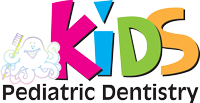29 Oct Dentistry for kids: How Pediatric Dentists Work With Children
 Each child responds in a different way to a dental visit. Some feel absolutely comfortable; others are frightful in the unfamiliar situation.
Each child responds in a different way to a dental visit. Some feel absolutely comfortable; others are frightful in the unfamiliar situation.
To help a child have successful dental visit and complete needed treatment, pediatric dentists use a wide variety of methods. A children’s dentist chooses a particular method based upon child’s health history, dental needs, type of treatment required, the consequences of no treatment, his or her emotional development, and parental preferences.
Methods Used by Pediatric Dentists to make the visit comfortable and successful:
- Tell-Show-Do
The pediatric dentist explains the treatment in words just right for the child’s age and level of understanding, shows the child the procedure in a simplified manner, and then does the treatment following the explanation. - Positive Reinforcement
This one is probably the favorite among the children. The pediatric dentist praises and rewards the child for any behavior that helps with treatment. - Distraction
In this technique, the child’s attention is distracted away from what might be perceived as unpleasant with conversation, music, movies or video games. - Local Anesthetic
A topical anesthetic can be applied with a cotton swab to numb the surface of the cheek or gums. Another option – is when local anesthetic injected in a specific area of a child’s mouth to prevent discomfort during treatment. - Oxygen
Nitrous oxide/oxygen, also known as laughing gas, can reduce anxiety and gagging in children and make long appointments easier. The child breathes the gas through a mask placed on his or her nose and remains fully conscious during treatment. - Protective Stabilization
Protective stabilization is a tactic that limits a child’s movement during treatment in order to decrease risk of injury and allow treatment to be completed safely. Varieties: asking the parent to hold the child on her lap with her arms hugging the child; using of a body “blanket” that holds the child’s arms and legs still and away from the mouth. - Sedation
This approach recommended for anxious children, very young children and children with special health care needs who would not be able to receive necessary dental care in a safe and comfortable manner without it.The pediatric dentist selects a medication and dose based upon your child’s overall health, level of anxiety and dental treatment recommendations. Child is relaxed but not asleep. She/he is able to respond to touch or voices. - General Anesthesia
It is most often recommended for children with extensive dental needs who cannot tolerate the treatment required to restore their oral health. In these cases general anesthesia (when child is asleep) is the safest way to complete the treatment.
 You, as a parent, can and should take an active role in selecting which method will be the best for your child. Study your options, visit pediatric dentist before your appointment and take a look how these methods implemented in real life.
You, as a parent, can and should take an active role in selecting which method will be the best for your child. Study your options, visit pediatric dentist before your appointment and take a look how these methods implemented in real life.
If you have any questions or concerns regarding your child’s anxiety and discomfort during dental treatment or while visiting children’s dentistry, please give us a call. Our specialists at Pediatric Dentistry will find the best treatment methods to make the child’s visit as safe and comfortable as possible!
Related Links:
https://www.kidspediatricdentistry.com/sedation-oral-and-iv/
https://www.kidspediatricdentistry.com/other-procedures-and-developments/
http://www.columbia.edu/itc/hs/dental/d7710/client_edit/syllabus/behavmgmt_criteria.html
